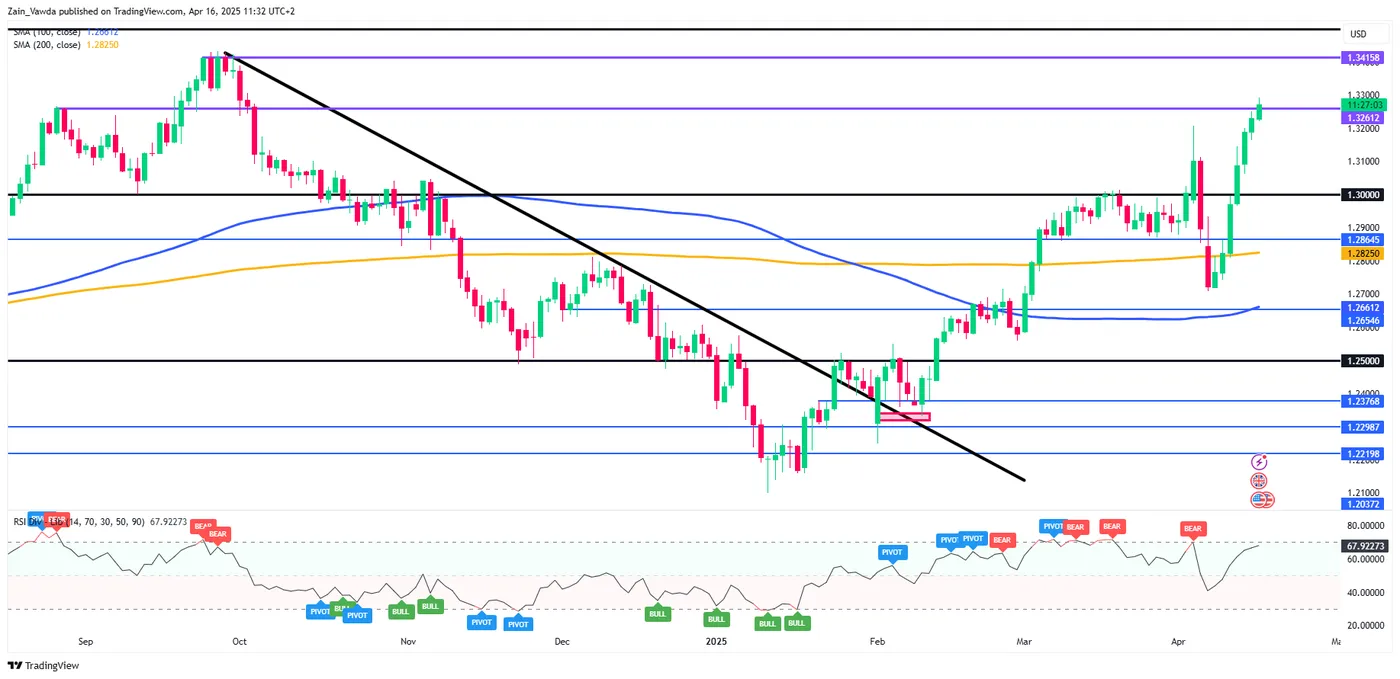- UK annual inflation dropped to 2.6% in March 2025, lower than expected, with notable decreases in recreation, culture, and transport prices.
- Markets are pricing in an 85% probability of a Bank of England rate cut at the May meeting.
- Analysts debate whether inflation has bottomed out, with concerns about rising energy and water bills potentially pushing inflation higher in the coming months.
The Office for National Statistics (ONS) released UK inflation data for March this morning. The data revealed that the UK’s annual inflation rate dropped to 2.6% in March 2025, down from 2.8% in February and below the expected 2.7%. The biggest price decreases came from recreation and culture, particularly games, toys, and hobbies (-4.2%) and data processing equipment (-5.1%). Transport also played a role, with motor fuel prices falling by 5.3%.
Price increases slowed for restaurants and hotels (3%, the lowest since July 2021), housing and utilities (1.8%), and food and non-alcoholic drinks (3%). On the other hand, clothing and footwear prices rose by 1.1%, reflecting typical increases as spring fashions hit stores.
Monthly inflation
rose by 0.3%, slightly less than the previous month’s rise and below predictions of 0.4%.
Core inflation
, which excludes volatile items, eased to 3.4% from 3.5%.

Inflation Moving Forward and Implications for the Bank of England (BoE)
Following the inflation data, markets are pricing in around an 85% probability of a
rate cut
from the BoE at the Central Banks May meeting.

The bigger question for consumers, at least, is whether this is as good as it is going to get. There is a school of thought among analysts that inflation has likely bottomed and that markets and consumers need to prepare for higher inflation moving forward.
The reason is largely to do with energy prices, as ING THINK put it well, stating energy bills have mostly helped lower inflation due to the big drop in natural gas prices after the 2022 spike. However, starting in April, energy bills will add 0.8 percentage points more to the annual CPI than they did in March. Water bills have also gone up significantly this month.
With this in mind, ING forecasts put April’s CPI figure at 3.2%, rising to 3.5% or maybe even a tad higher towards the end of the third quarter.
Personally, I do not see such a huge jump in April largely on the back of global uncertainty, which I think is already impacting demand and spending habits. This could lead to consumers spending less and prioritizing savings due to an uncertain economic outlook, and thus help keep Global inflation in check.
Of course, this will also depend on how tariff negotiations shake out, as this could, in theory, also lead to an increase in inflation, thus negating my assessment of lower demand and steady inflation.
Services inflation also still remains uncomfortably high, but is on target to reach the BoEs forecast figure.
All in all, an interesting period ahead for the UK economy, something the rest of the world is likely to grapple with as well for the majority of 2025.
Technical Analysis - GBP/USD
Looking at GBP/USD from a technical standpoint, the rally to the upside has broken above the resistance level at 1.3261. However, GBP/USD needs to record a daily close above the 1.3261 for further gains to materialize.
The 14-period RSI is also approaching overbought territory, which could hinder further upside.
As discussed in yesterday’s article GBP/USD Analysis: labor data, inflation watch & key trading levels .
A modest recovery by the US Dollar is what kept GBP/USD from advancing yesterday, and early session weakness today is allowing cable to move higher.
I stand by my analysis yesterday, this move is largely being driven by the weaker US dollar rather than GBP strength.
GBP/USD Daily Chart, April 16, 2025

Support
- 1.3261
- 1.3100
- 1.3000
Resistance
- 1.3322
- 1.3415
- 1.3500
Europe’s Opening Bell: China Q1 GDP beat, Gold nears $3300/oz as global stock surge grinds to a halt
Original Post

